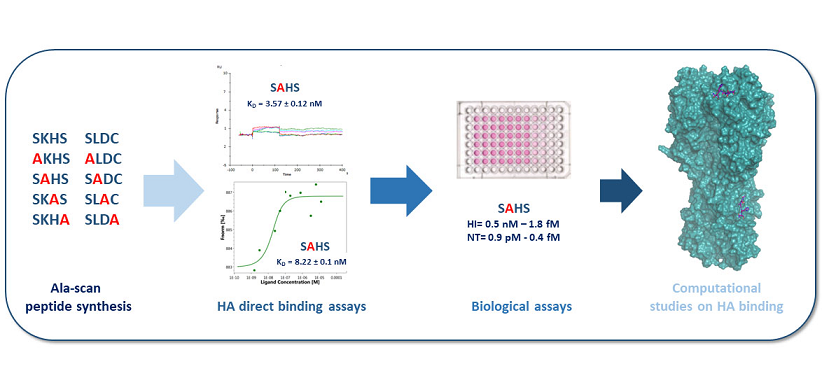Influenza is a highly contagious, acute respiratory illness, which represents one of the main health issues worldwide. Even though some antivirals are available, the alarming increase of virus strains resistant to them highlights the need to find new drugs. Previously, Superti et al. have deeper investigated the mechanism of the anti-Influenza virus effect of bovine Lactoferrin (bLf) and the role of its tryptic fragments (the N and C-lobes) in the antiviral activity. Recently, through a truncation library, we identified the tetrapeptides, SKHS (1) and SLDC (2), derived from bLf C-lobe fragment 418-429, which were able to bind hemagglutinin (HA) and inhibit cell infection in a concentration range of femto- to picomolar. Starting from these results, in this work, we initiated a systematic SAR study on the peptides mentioned above, through an Alanine scanning approach. We carried out binding affinity measurements by microscale thermophoresis (MST) and Surface Plasmon Resonance (SPR), and hemagglutination inhibition (HI) and virus neutralization (NT) assays on synthesized peptides. Computational studies were performed to identify possible lig-and-HA interactions. Results obtained led to the identification of an interesting peptide endowed with broad anti-Influenza activity and able to inhibit viral infection to a greater extent of reference peptide.

